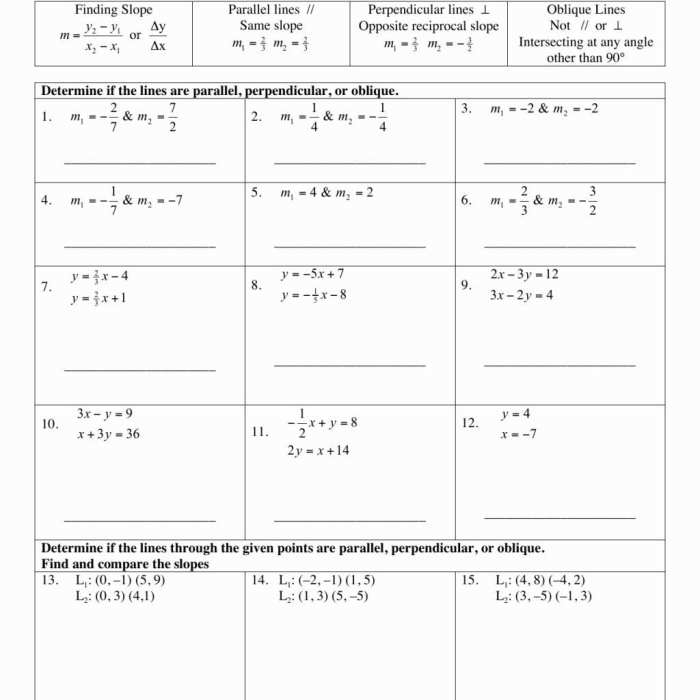Embark on a journey into the realm of geometry with our comprehensive guide to parallel perpendicular lines worksheet answers. This definitive resource empowers you to conquer the intricacies of these geometric concepts, equipping you with a profound understanding of their definitions, properties, and real-world applications.
Through a seamless blend of theory and practice, this guide unravels the mysteries of parallel and perpendicular lines, leaving no stone unturned. Delve into the captivating world of geometry and emerge as a master of these fundamental concepts.
Parallel and Perpendicular Lines

Lines that lie in the same plane and never intersect are called parallel lines. Lines that intersect at right angles (90 degrees) are called perpendicular lines.
Parallel Lines, Parallel perpendicular lines worksheet answers
- Never intersect
- Lie in the same plane
- Have the same slope
- Form equal angles with transversals

Perpendicular Lines
- Intersect at right angles (90 degrees)
- Lie in the same plane
- Have slopes that are negative reciprocals of each other
- Form four right angles

Expert Answers: Parallel Perpendicular Lines Worksheet Answers
What is the key difference between parallel and perpendicular lines?
Parallel lines never intersect, while perpendicular lines intersect at a right angle (90 degrees).
How can I identify parallel lines in a figure?
Parallel lines have the same slope and do not intersect.
What are some real-world applications of parallel lines?
Parallel lines are used in architecture (e.g., columns, walls), engineering (e.g., bridges, railways), and design (e.g., stripes, grids).